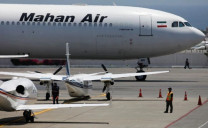Better get used to high-priced food
Much of the sharp increase in region’s food prices is due to production shortfalls caused by extreme weather events.

Although volatility in commodity markets is nothing new, there are worrying signs that food price fluctuations are now taking place within a much higher bandwidth than ever before.
For Asia’s poor, who already spend 60 per cent of their household budget on food, even the smallest fluctuation in food prices forces unenviable choices on where best to devote their scant resources. A 10 per cent rise in domestic food prices in developing Asia threatens to push an additional 64 million people in to poverty. With food price inflation in many emerging Asian economies averaging 11 per cent in the first half of 2011 alone, the growing numbers of families facing the scourge of dire poverty is staggering.
Much of the sharp increase in the region’s food prices is due to production shortfalls caused by extreme weather events and subsequent export bans by some food producing countries. Growing appetites for grains, oil and other foodstuffs in emerging economies like the People’s Republic of China and India are exerting further upward pressure on supply. There has also been a growing trend over the past decade to ‘financialise’ commodities, turning food into an important tradable asset class, just like stocks, bonds, currencies or real estate. As a result, movement in one major asset — say, real estate prices in the US — can drive food prices in other parts of the world to levels well above what real supply and demand might dictate. The current money policy in industrial countries may have also driven the financialisation of commodities.
And then, of course, there’s the weakness of the US dollar in which most food commodities are denominated, as well as high oil prices, which raises costs at almost every step of the food supply chain from fertiliser and animal feed to fuel for bringing food from the farm to the kitchen table.
With a ‘new normal’ of persistently high and volatile food prices here to stay, what are policymakers to do?
There are no easy solutions, but when faced with bouts of soaring food prices, governments must be both pragmatic and flexible.
Tightening monetary policy is a standard tool to combat inflation and cool economic overheating. It is a fairly ineffective tool if the inflationary pressure is supply-side. Rate hikes take months to show results and, if overblown, can tighten the economic leash until it chokes growth, especially for small and medium businesses.
Inflation targeting is also of questionable value if the public does not view the measures as credible. Consumers need to know what to expect. Social programmes that target the most vulnerable members of society from the effects of higher commodity prices can be used where budgets allow — a less costly measure for the economy as a whole compared to tightening monetary policy.
There are also a broad range of supply-side policies that can reduce bottlenecks in commodity-based industries. The further reduction of trade barriers between countries — to counter local food shortages through imports from surplus producers — should be pursued through regional cooperation and other forums.
Taken together, it is clear that a globalised approach is needed to effectively address food price inflation. While acting nationally, policymakers will need to think globally and coordinate regionally. Only then can we be assured that enough resources will be available to keep growing appetites satisfied at reasonable costs.
Published in The Express Tribune, October 29th, 2011.
















COMMENTS
Comments are moderated and generally will be posted if they are on-topic and not abusive.
For more information, please see our Comments FAQ